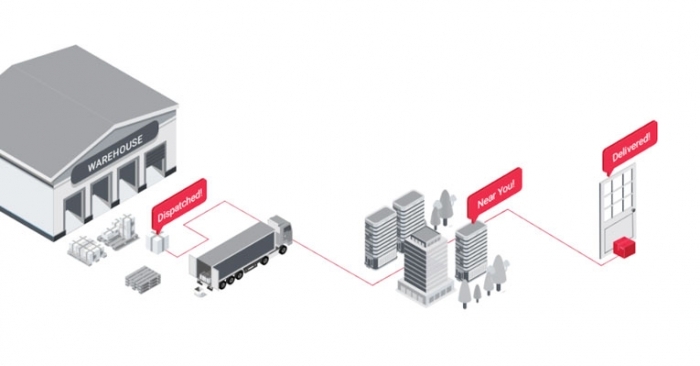How to negotiate with shipping partners: Things you need to know
There’s a lot that goes on in the back offices of e-commerce companies to ensure customers get exactly what they want when they want it

There’s a lot that goes on in the back offices of e-commerce companies to ensure customers get exactly what they want when they want it. Logistics for e-tailers is a process that begins long before an order is placed. Selecting a courier company is a difficult task that requires numerous considerations. For medium to large industries, multiple courier partners are required that can handle thousands of orders per day.
Naman Vijay of ClickPost is writing how to negotiate with shipping partners along with the factors to consider and various tips.
Before tying up with any courier partner, it’s important to pre-emptively discuss with absolute clarity the terms on which the courier partner will provide their services which includes everything required for end-to-end logistics at reasonable shipping rates.
So how can you keep costs down? To what extent can you negotiate and how can you ensure you are getting a good deal that helps you overcome challenges in your shipping strategy?
Few factors to consider that aid in negotiating with a courier partner:
1. What is a shipping strategy and why do I need one?
In simplest terms, a shipping strategy is a plan that lets you determine what your shipping goals are and what the obstacles you need to overcome are to reach those goals. For example, one major common shipping goal is to reduce shipping costs by a certain percentage without sacrificing order fulfilment, delivery speed or customer satisfaction.
4 major areas need to be considered by an enterprise when engaging a new courier partner, i.e., shipping rates and pricing, speedy delivery, transparency in shipping and tracking by using advanced technology, and finally the reach of the partner, based on the fleet of vehicles and channel partners they have in place.
2. Understanding the impact of shipping rates on your bottom line
An important function of determining the best courier companies to partner with is to calculate what are the ideal shipping rates that would enable or enhance your company’s profitability. While creating a simple spreadsheet can help you understand the various elements that contribute to both expenses and profits before manifestation and up to order completion, another smart and efficient option is to deploy AI/ML (Artificial Intelligence / Machine Learning) to calculate and compare shipping rates.
Take the following costs into consideration while determining your bottom line.
- Cost of Production: From raw materials to manufacturing, the total cost of end-to-end production for each category of products plays a huge role in the final pricing.
- Cost of Packaging: Packaging is a huge part of the shipment process and can bear a significant cost, especially if a product has specific requirements to take into account like fragility or temperature
- Prior Shipping Costs: With the help of integrated logistics platforms, you can review your shipping expense history and determine how much you have spent on shipping over a certain period, like 12 months, and how it needs to be reduced.
- Profit Margin: Once you’ve established what your overall costs are, you can determine what they need to be and the optimum pricing for your product that will provide you a profit margin.
3. How carrier partners calculate shipping costs
While shipping costs inarguably play a big role in determining how you negotiate with a courier partner to provide shipping services for your company, how these costs are calculated ranks equally high in terms of importance. The first thing to consider here is the basic variables on which you can determine the serviceability of a shipping agency as well as the costs.
The rates may also vary depending on additional factors like:
- Shipping Zones and Delivery Routes: It’s established that the origin and destination are of great importance, but even the routes taken can impact your shipping costs in case there are any cross-border formalities or if an optimal route is not being used leading to delays in final delivery.
- Handling Fees: This type of fee can encompass a range of possibilities, from special requirements for transportation (like temperature-control) to documentation processing (in case there are any customs clearances or requirements for proof of delivery in case of high-value products).
- COD Reconciliation: Some courier companies charge independently for Cash on Delivery orders or additional expenses arise during the process of COD reconciliation. A company specialising in that particular requirement may not charge a separate fee for the same.
Tips to negotiate with a courier partner:
Now that you are aware of the shipping rates you require to maintain and improve profitability as well as the extent of services you require, you can approach the various courier partners of your choice with a firm offer. These simple tips will help you to get the best possible deal and keep costs low while maintaining a high standard of performance.
1. Don’t disclose your expectations
A basic rule of negotiation (or life, for that matter) is not to reveal your hand first. As a service provider, they will make the initial offer, which will likely be a standard template for pricing. With your accumulated knowledge of shipping strategy and how shipping rates are calculated, you can learn a lot. Find out how they reached their base rates, what is included within this pricing scheme, and if all of the services you require, like careful handling or returns management, are encompassed within it.
2. Do not negotiate with yourself
Make all the revisions you require to the existing proposal. This will give you better leverage to negotiate a viable price with that courier partner. After submitting your revised version of their offer, there may be a temptation for you to revise it further. Maybe after recalculation of profit margins, you were able to accommodate a higher base shipping rate. In such a case, it’s best to remain firm with your initial revisions to their offer to ensure you maintain the upper hand during extended negotiations.
3. Keep a time-limit for negotiations
Negotiating the terms of an SLA with a courier partner is no easy feat. Given the overall impact that base shipping rates and unexpected hidden costs can have on profit margins, there is a heavy temptation to negotiate until you can bring the prices down. Setting a time-limit can ensure the negotiations do not continue beyond a reasonable period of time and push you to focus on your priorities.
4. Be willing to say no
The major advantage the knowledge on your shipping strategy and profit margins give you is an understanding of where to draw the line in terms of negotiations. Sometimes, that also means walking away from a deal that isn’t cost-effective enough and approaching another courier partner.
 | Naman Vijay, chief executive officer & co-founder, ClickPost |
The views and opinions expressed in this article are those of the author and do not necessarily reflect the views of Indian Transport & Logistics News



